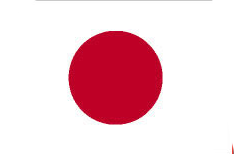Material characteristics of LED flashlight
The material of LED flashlights largely affects the cost of LED flashlights, which in turn affects their prices in the market. At the same time, the material of the LED flashlight also has a profound impact on its durability and service life. Basically, good flashlight manufacturers will consciously increase the input of materials, which is a good guarantee for the quality of LED flashlights.
In terms of physical specifications, the housing will be made of aluminum alloy, but there are also differences between aluminum alloys. Generally, T6061 is used for aviation-grade aluminum alloy, and there are other models with the worst quality and hardness. Aviation-grade aluminum alloy is a very good material with reliable quality. Of course, if there is stainless steel, the quality will be better and the corresponding cost will be much higher.
After the material selection is determined, the surface of the LED flashlight needs to be hard-oxidized. This is a good coloring technique. Compared with ordinary coloring, it will not fade or fade. The disadvantage is that it is easy to make black and color. There will be chromatic aberrations. This is why most LEDs on the market are black.
Circuit design is, to be honest, it's a bit far-fetched to attribute him to materials, but let me mention it. Under normal circumstances, the maximum brightness supported by the LED lamp beads. Many LED flashlights will directly mark this brightness value as the highest brightness value of the flashlight, but in fact this is very unscientific. Since the maximum brightness supported by the LED lamp beads may not be fully reflected, the heat dissipation capacity of this flashlight is related to the current control on the circuit board. This is why some flashlights on the market use CREE T6 lamp beads, but the maximum brightness of the target is only more than 100 lumens. This is also a very scientific approach based on actual conditions.
Since it is an LED flashlight, of course LED lamp beads must be used. The practical application of high-brightness LEDs has brought a revolution to the lighting industry. Low energy consumption and long life are its biggest advantages. Most bright flashlights will be used. LED lamp beads have different origins, which are mainly manifested in the difference in brightness and service life. Generally, flashlight manufacturers like to use branded LED beads, mainly CREE from the United States, SSC from South Korea, and Nichia from Japan. These lamp beads have reliable quality, long service life and low power consumption, but the cost is much more expensive than domestic lamp beads. The LED flashlights on the market still use CREE lamp beads. Common models of CREE lamp beads are Q5, R5, T6, U2, etc., and the maximum brightness they support gradually increases.
Although the current LED lamp beads have obvious advantages, they are not without disadvantages. At present, the biggest problem of LED is that its light collection is difficult to solve. Divergent light sources make it almost impossible to illuminate the ground 10 meters away at night. The cold light color also makes its penetration into outdoor rain, fog, and snow drop sharply. Therefore, it is usually possible to improve the performance of the lamp as much as possible by connecting several or even dozens of LEDs at the same time, but the effect is not obvious. Although there are high-power, high-brightness concentrating LEDs, the performance has not yet reached the level of completely replacing incandescent bulbs. At the point where the cost is very high.
Because the LED lamp beads are white light, although the brightness and range are not problematic, the penetrating power is not strong, which also limits the exposure range in the fog. Therefore, for true high-intensity outdoor activities, an incandescent bulb is needed as a backup to deal with the impact of complex and changeable environments on lighting.
Glass is one of the best materials for making flashlight lenses, because glass has a very good light transmittance. Old-fashioned flashlights in the past used ordinary glass as the lens, but the glass was relatively brittle, and the flashlight was easily broken when dropped. Moreover, glass slag is easy to cut the skin, which brings a lot of inconvenience to outdoor activities. The current LED flashlights mostly use optical tempered glass, which is more sturdy while taking into account the light transmittance. In addition, the toughened glass will not hurt the skin even if it is broken, so it is safer.
The reflector is a reflector that uses a light bulb as a light source and needs to be illuminated at a long distance. Usually cup-shaped, commonly known as reflector. There are mainly three common materials:
Plastic reflector. It is characterized by low cost, easy damage, and poor heat dissipation.
Metal reflector. It is generally made of aluminum alloy and has the characteristics of light weight, sturdiness and durability, and good heat dissipation.
Glass reflector. It is characterized by high cost, easy damage, high temperature resistance, and heavy weight.
There are two types of reflectors: orange peel reflectors and glossy reflectors. Orange peel has low reflectivity, but there will be no yellow circles around it. Because the reflector has orange peel, the light spots are scattered, and there is no yellow circle around, but the outline of the light spots is not as clear as the smooth surface, and the light loss is slightly larger. The quality of the reflector directly determines the concentrating and flooding performance of the LED flashlight. Generally speaking, a large and deep reflector has a strong light-gathering performance and a long irradiation distance. The small and far reflector is the opposite
The battery types are generally divided into two types: dry batteries and rechargeable batteries. Dry batteries are mainly mainstream AAA (No. 7) and AA (No. 5), and the other is CR123, which is also disposable. Rechargeable batteries are generally lithium batteries, 14500, 16340, 18650, 26650, etc. There are also nickel-metal hydride batteries (1.2V) that can be charged with AA batteries. Among them, the 18650 battery is the mainstream on the market and the easiest to buy. "18650" actually refers to the size of the battery. 18 represents the battery diameter of 18mm, 650 represents the battery length of 65mm, and so on.
Lithium batteries are also divided into protection circuits (circuits to prevent overcharge and overdischarge) and those without. Everyone should know that lithium batteries cannot be overcharged or overdischarged. If the battery is overcharged, it is fully charged and still not held in the charger. There is a danger of water leakage or explosion if you continue to charge it for a long time.
If the battery is over-discharged, the battery will not charge until it is completely empty. This will cause the battery to be scrapped. Now that the protection circuit is added, there will be no such problem, but the disadvantage is that the volume is larger than that without the protection circuit (that is, the battery size mentioned in the previous paragraph), the diameter has increased by about 1 mm, and the length has increased by about 2 Mm. Putting the battery into some flashlights can be a little difficult, and you need to feel it slowly before inserting it, but most flashlights can be easily inserted.
There is also the issue of batteries in series and parallel. Let me talk about it. In fact, physics tells us that the current in series is unchanged, and the voltage is twice the original; the voltage in parallel is unchanged, and the current is twice the original


 English
English 简体中文
简体中文 日本語
日本語 français
français Español
Español русский
русский 繁體中文
繁體中文 português
português Deutsch
Deutsch 한국인
한국인 اللغة العربية
اللغة العربية Nederlands
Nederlands italiano
italiano Polski
Polski Српски
Српски